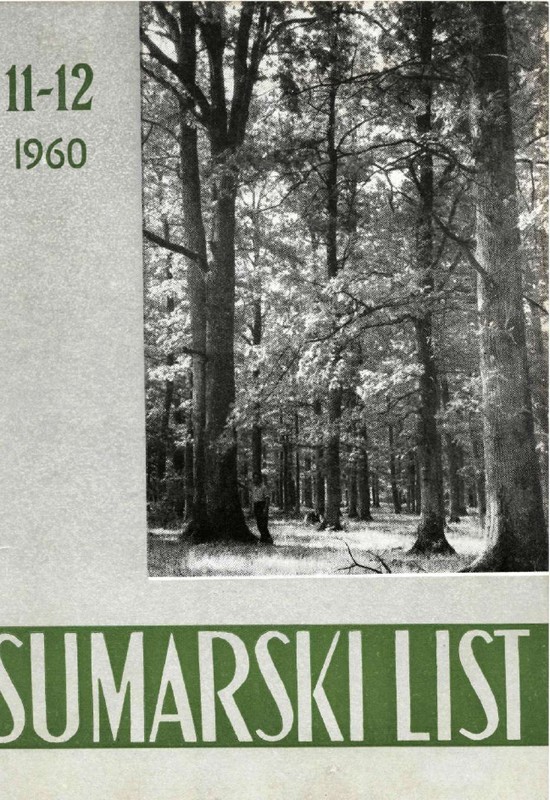
broj: 11-12/1960
pdf (12,4 MB) |
|
||||||||||||||
| DENDROMETRIJA | ||
| Emrović Borivoj | ||
| Double-entry volume tables for Silver Fir in Gorski Kotar region. PDF EN | 345 | |
| ISKORIŠČAVANJE ŠUMA | ||
| Bađun Stanko | ||
| The effect of blue-stain on the techncal properties of wood. PDF EN | 357 | |
| ZAŠTITA ŠUMA | ||
| Mikloš Ivan | ||
| Pygaera anastomosis L. — a new insect pest on Poplars. PDF EN | 369 | |
| UZGAJANJE ŠUMA | ||
| Zmijanac Đuro | ||
| Some diriections for the cultivation of forest tree species in plantations. PDF EN | 371 | |
| Summary: In the article is recommended cultivation of Conifers among Poplars and Sycamores in the manner that within the N-S-rows are alternately planted Poplars and Sycamores and between them within the row Conifer plants. If the first plant within the N-S-row is a Sycamore, then at a 4 m,.-distance comes a Poplar, and thereafter alternately Sycamore etc. Between every two plants (Poplar and Sycamore) are to be set in three Conifers. In this way the plants within a N-S-row are at 1 m.-distance from one another. The following N-S-row should be 7 m. apart (east- or westwards), and the first plant to be set in is a Sycamore, then at 4 m.-distance a Poplar and so on, while between every two plants (Poplar and Sycamore) are put again three Conifers. The N-S-rows are at a 7 m.-distance apart in order to make possible the growing of hoed crops in the between-area during a 6-year-period. After 6 years every two Conifer plants around each Poplar or Sycamore tree are lifted and transplanted into a new N-S-row 3.5 m. apart, so that in this manner we have on a 14-ha.-area a plantation consisting of 2,500 Poplars, 2,500 Sycamores, and 15,000 Conifer trees. After a 6-year-period farm crops are no more grown. The author recommends to cut Poplars for the first time after 12 years, and Sycamores after 15 years. For the second time Poplars are cut after 25 years and Sycamores after 30 years as thinning material. After 30 years there remain only Conifer trees at a 4 m.-distance from one another, For these Conifer trees the author recommends to be cut after 40 years following the establishment of the plantation. Assuming that the Spruce has been planted between the Poplars and Sycamores the author has theoretically calculated that under such a mode of planting and a good working of soil together with the necessary manuring and watering an average annual volume increment of 55.80 cu. m./ha. could have been achieved. The author considers that the Sycamores could not interfere with the Poplars because Poplars grow faster while Sycamores are semiskiophilous species. Both of them would give the necessary shade to Conifers. Through the first cutting of Poplars after 12 years the Conifers would obtain again enough light and when the second-growth Poplars from the roots or stools should achieve a 6 m.-height then the Sycamores will be cut which means 15 years after the planting took place or 3 years following the first cutting of Poplars. Thus the Conifers would receive again enough light, and the Sycamores would briskly sprout from the root system. After the second cutting of Poplars, i. e. after 25 years, both the Sycamores and Conifers would obtain again enough light for their further development, while after the 30th year, i. e. after the second cutting of Sycamores there would remain in the plantation only Conifers, which should then be cut 10 years thereafter. In this manner within a period of 40 years there would be carried out five cuttings in the plantation. | ||
| Žetko Alojz | ||
| Successful sowing by hand of the Austrian Pine in the Karst region. PDF | 379 | |
| Piškorić Oskar | ||
| Douglas Fir (Pseudotsuga Douglasii Carr.) as one of the species constituting the productive stands in the degraded part of the Karst region. PDF EN | 383 | |


